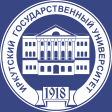List of issues > Series «Earth Sciences». 2024. Vol 47
Influence of Weather Conditions on the Process of Mass
Development of Cyanobacteria in the Kuibyshev Reservoir
Selezneva Alexandra Vasilievna, Candidate of Sciences (Technics), Associate Professor, Senior Researcher, Laboratory for Monitoring of Water Objects, Institute of Ecology of the Volga Basin RAS – a Branch of the Samara Federal Research Center RAS, 10, Komzin st., Togliatti, 445003, Russian Federation, e-mail: alek.selezneva@mail.ru
Seleznev Vladimir Anatolievich, Doctor of Sciences (Technics), Candidate of Sciences (Geography), Professor, Chief Researcher, Laboratory for Monitoring Water Objects, Institute of Ecology of the Volga Basin RAS – a Branch of the Samara Federal Research Center RAS, 10, Komzin st., Togliatti, 445003, Russian Federation, e-mail: seleznev53@mail.ru
Mineyeva N.M., Poddubnyy S.A., Stepanova I.E., Tsvetkov A.I. Abioticheskiye faktory i ikh rol v razvitii fitoplanktona Volgi. Vodokhranilishcha sredney Volgi [Abiotic factors and their role in the development of Volga phytoplankton ]. Biologiya vnutr. vod. [Biologiya vnutr. vod], 2022, no. 6, pp. 640. http://doi.org/10.31857/S0320965222060158 (in Russian)
Ashikhmina T.YA., Kutyavina T.I., Domnina Ye.A. Izucheniye protsessov evtrofikatsii prirodnykh i iskusstvenno sozdannykh vodoyomov (literaturnyy obzor) [Study of the processes of eutrophication of natural and artificially created reservoirs (literature review)]. Teoreticheskiye problemy ekologii [Theoretical problems of ecology], 2014, no. 3, pp. 6-13. (in Russian)
Datsenko YU.S., Puklakov V.V., Edelshteyn K.K. Analiz vliyaniya abioticheskikh faktorov na razvitiye fitoplanktona v maloprotochnom stratifitsirovannom vodokhranilishche [Analysis of the influence of abiotic factors on the development of phytoplankton in a low-flow stratified reservoir]. Trudy Karelskogo nauchnogo tsentra RAN [Proceedings of the Karelian Scientific Center of the Russian Academy of Sciences], 2017, no. 10, pp. 73-85. (in Russian)
Zelenevskaya N.A. Osobennosti razvitiya fitoplanktona Saratovskogo vodokhranilishcha v 2019 godu [Analysis of the influence of abiotic factors on the development of phytoplankton in a low-flow stratified reservoir]. Tatishchevskiye chteniya: aktualnyye problemy nauki i praktiki [Tatishchevsky readings: current problems of science and practice]. Proc. 27th Intern. sci. and pract. conf.]. Tolyatti, Volzhskiy Univ. named V.N. Tatishchev, 2020, vol. 2, pp. 230. (in Russian)
Lazareva V.I., Stepanova I.E., Tsvetkov A.I. et al. Kislorodnyy rezhim vodokhranilishch Volgi i Kamy v period potepleniya klimata: posledstviya dlya zooplanktona zoobentosa [Oxygen regime of the Volga and Kama reservoirs during the period of climate warming: consequences for zoobenthos zooplankton]. Trudy IBVV RAN [Proceedings of the IBW RAS], 2018, iss. 81(84), pp. 47-84.https://doi.org/10.24411/0320-3557-2018-1-0005 (in Russian)
Kopylov, A.I., Maslennikova, T.S., Kosolapov, D.B. Sezonnyye i mezhgodovyye kolebaniya pervichnoy produktsii fitoplanktona v Rybinskom vodokhranilishche: vliyaniye pogodnykh i klimaticheskikh izmeneniy [Seasonal and interannual fluctuations in the primary production of phytoplankton in the Rybinsk Reservoir: the influence of weather and climate changes]. Vodnyye resursy [Water Resources], 2019, vol.46(3), pp. 270-277. http://www.doi.org/10.31857/S0321-0596463270-277 (in Russian)
Litvinov A.S., Zakonnova A.V. Termicheskiy rezhim Rybinskogo vodokhranilishcha pri globalnom poteplenii [Thermal regime of the Rybinsk reservoir under global warming] Meteorologiya i gidrologiya [Meteorology and Hydrology], 2012, no. 9, pp. 91-96. (in Russian)
Pautova V.N., Nomokonova V.I., Dinamika soderzhaniya khlorofilla “a” v fitoplanktone Kuybyshevskogo vodokhranilishcha [Dynamics of chlorophyll “a” content in the phytoplankton of the Kuibyshev reservoir]. Gidrobiologicheskiy zhurnal [Hydrobiological Journal], 2002, vol. 38, no. 6, pp. 3-9. (in Russian)
Popchenko I.I. Vidovoy sostav i dinamika fitoplanktona Saratovskogo vodokhranilishcha [Species composition and dynamics of phytoplankton in the Saratov Reservoir]. Togliatti, Institute of Ecology Volzhskiy basin RAS Publ., 2001, 148 p. (in Russian)
Selezneva K.V., Selezneva A.V., Seleznev V.A. Transformatsiya termicheskogo rezhima Kuybyshevskogo vodokhranilishcha na fone globalnogo potepleniya klimata [Transformation of the thermal regime of the Kuibyshev reservoir against the backdrop of global warming]. Vestnik Voronezhskogo gosudarstvennogo universiteta. Seriya: Geografiya. Geoekologiya [Bulletin of Voronezh State University. Series: Geography. Geoecology], 2023, no. 3, pp. 57-67. (in Russian)
Mineyeva N.M., Semadeni I.V., Solov'yeva V.V., Makarova O.S. Soderzhaniye khlorofilla i sovremennoye troficheskoye sostoyaniye vodokhranilishch Volgi (2019–2020 gg.) [Chlorophyll content and the current trophic state of Volga reservoirs (2019–2020)]. Biologiya vnutrennih vod [Biology of inland waters], 2022, no. 4, pp. 357. https://doi.org/10.31857/S0320965222040210 (in Russian)
Sukharevich V.I., Polyak YU.M. Globalnoye rasprostraneniye tsianobakteriy: prichiny i posledstviya (obzor) [Global distribution of cyanobacteria: causes and consequences (review]. Biologiya vnutrennikh vod [Biology of inland waters], 2020, no. 6, pp. 562-572. (in Russian)
Bertani I., Primicerio R., Rossetti G. Extreme climatic event triggers a lake regime shift that propagates across multiple trophic levels. Ecosystems, 2016, vol. 19, iss. 1, pp. 16.https://doi.org/10.1007/s10021-015-9914-5
Briland R.D., Stone J.P., Manubolu M. et al. Cyanobacterial blooms modify food web structure and interactions in western Lake Erie. Harmful Algae, 2020, vol. 92, 101586.https://doi.org/10.1016/j.hal.2019.03.004
Dziallas C., Grossart H.-P. Increasing oxygen and water temperature select for toxic Microcystis sp. PLoS ONE, 2011, vol. 6, no. 9, pp. 1.
Adrian R., O’Reilly C.M., Zagareze H. et al. Lakes as sentinels of climate change. Limnol., Oceanogr., 2009, vol. 54, no. 6, pt. 2, pp. 2283.
Özkan K., Jeppesen E., Davidson T.A. et al. Long-term trends and temporal synchrony in plankton richness, diversity and biomass driven by reoligotrophication and climate across 17 Danish Lakes. Water, 2016, vol. 8, no. 10, pp. 427. https://doi.org/10.3390/w8100427
Paerl H.W., Paul V.J. Climate change: links to global expansion of harmful cyanobacteria. Water Res., 2012, vol. 46, pp. 1349.
Robarts R.D., Waiser M.J., Arts M.T., Evans M.S. Seasonal and diel changes of dissolved oxygen in a hypertrophic prairie lake. Lakes and Reservoirs: Research and Management, 2005, vol. 10, pp. 167.
Seleznev V. A., Bespalova K. V., Selezneva A. V. Seasonal variability of phosphate content in the Volga water under conditions of anthropogenic eutrophication of reservoirs. Journal of Water Chemistry and Technology, 2018, vol. 40, iss. 5, pp. 307-311.https://doi.org/10.3103/S1063455X18050107
Kosten S., Huszar V.L.M., Becares E. et al. Warmer climates boost cyanobacterial dominance in shallow lakes. Glob. Change Biol., 2012, vol. 18, pp. 118.
